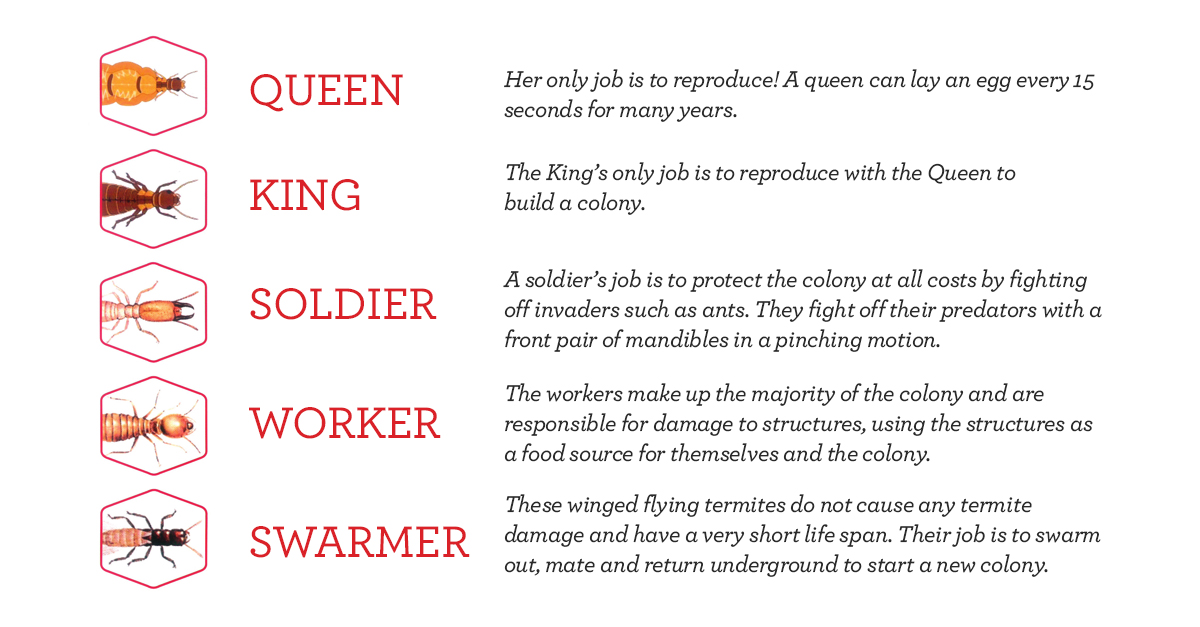Different Types Of Fighting
Even if your role models don’t include Jackie Chan or Jean-Claude Van Damme, the stars of many martial-arts movies, you may have a hankering to try some of the moves yourself—ratcheted down, of course. Before you do, here’s a look at the different types of martial arts, their possible health benefits (see inset) and risks, and how to get started.
Martialarts originated as ancient combat techniques. Depending on the form, they involve performing technical and often explosive moves such as kicks, punches, and throws; some types use swords, bow and arrow, or other weapons. Practitioners boost their strength, agility, balance, power, reflexes, flexibility, and cardiovascular endurance. Equally important as the fighting and technical aspects of martial arts are the mental and spiritual components, which focus on improving mental endurance, resilience, and concentration; controlling emotions and negative thinking; and even, ultimately, transcending the ego and its mental traps.
Different Types Of Fighting Stances

Types of martial arts

- Karate. This covers many styles of self-defense involving kicks, punches, and open-handed chops. It’s believed that the word “karate” was first used in Okinawa, Japan, when a martial artist created a form of martial art that had Chinese influences. 'Kara” originally referred to China and “karate” to Chinese hand—but the Japanese translation of karate is “empty hand.” As with all martial arts, karate has different levels of ranking, reflecting expertise. In karate (as well as many other martial arts) they’re denoted by belts in different colors, with the well-known black belt representing the highest level of expertise.
- Jujitsu. Developed in China and Japan, this martial art is a forerunner of both aikido and judo. All three martial arts rely on grappling, a technique that involves fighting in close proximity to your opponent with lots of body contact; it can involve anything from throws to strangle-type holds to taking your opponent to the ground or floor and fighting there. Jujitsu uses the attacker’s momentum to do joint locks (in which you force your opponent’s joint, such as an elbow or knee, beyond its normal range of motion, resulting in pain or injury) to restrain the opponent. One variant, Brazilian jujitsu, relies on choking the opponent and continuing the fighting on the ground.
- Aikido. Like jujitsu, this Japanese martial art—meaning “the way for harmony' or 'unification of your spiritual energy' or ki—makes use of the momentum and strength of the opponent to achieve your objective (sometimes called “nonresistance”). Aikido doesn’t use kicking and makes less use of hand strikes than jujitsu. Instead, the practitioner uses a lot of turning motions and pushing movements accompanied by joint locks.
- Judo. This martial art also originated in Japan. Like jujitsu and aikido, it’s based largely on grappling, but in this case with an emphasis on throws and pinning the opponent to the ground.
- Hapkido. This Korean martial art incorporates a variety of weapons, including belts, ropes, and canes. They’re used in moves including kicks, joint locks, throws, and hand strikes to the body’s pressure points.
- Kung fu. This Chinese martial art uses numerous fighting styles, some of them involving acrobatic elements such as flips, jumps, and high kicks. Kung fu can be loosely divided into two schools: those that focus on arm work, such as rapid, close-range punching; and those that focus on acrobatics, with kicks and leg work. Some kung fu forms encourage the practitioner to be aggressively forceful, while others encourage the yielding model, in which you use the attacker’s force against him or her. Some schools emphasize a focus on relaxation and visualization techniques.
- Capoeira. This Brazilian martial art was originally developed by Angolan slaves who disguised their self-defense moves as dance. It’s very acrobatic, with flips, punches, and kicks. See a video of a capoeira class.
- Krav maga. Developed by the Israeli Defense Force (IDF), krav maga (meaning “battle combat” in Hebrew) focuses on hand-to-hand combat with grappling, wrestling, and hand strikes. It also teaches the practitioner to use virtually any ordinary object in the environment—a tree branch, a garbage can lid—to help fend off an attacker, even one who is much larger and heavier. Classes are often taught by Israelis who served in the IDF.
- Tae kwon do. This Korean martial art may be one of the world’s oldest. It emphasizes kicking in particular, though the practice also incorporates hand strikes, joint locks, throws, and punches.
- Tai chi. Also known as tai chi chuan, this Chinese martial art involves choreographed, slow-motion postures. Some forms use a sword or other weapons. It’s said that tai chi originated when a Chinese monk saw the fluid movements of a crane fending off a snake and combined the graceful movements with Taoist breathing techniques. In the West today, tai chi is usually practiced as a form of exercise, rather than as a martial art.

Health Benefits of Martial Arts
Martial arts can provide numerous health benefits for people of all ages. Here’s a summary of some recent research findings.
Jan 29, 2021 Depending upon the types of fire on board ship, the flag state and class requirement accordingly determines the number, types, and locations of these portable fire fighting extinguishers as per SOLAS. The ship’s officer must ensure all the fire fighting equipment, including the fire extinguishers, are always in the state of readiness.
- From Jack Dempseys legendary boxing matches in the 1920s, to Bruce Lee’s blindingly fast punches and flashy kicks, striking styles have very different ways to defend yourself when fighting upright. Punches, kicks, blocks, knees and elbows are all fair game when striking, used more, less or not at all depending on what type of Martial Art you.
- Chronic lymphocytic leukemia (CLL) is the most common leukemia diagnosed in adults. What sets CLL apart from other leukemia types include where it starts and how fast it usually grows.
Finding a class
You can find martial arts classes at community centers, health clubs, colleges and universities, and stand-alone studios. The first thing you should decide is what style or styles best fit what you’re looking for. Are you interested in martial arts as a fun workout, for example, or as a way to defend yourself, indulge your competitive side, or learn about another culture? Do you like to punch or kick? Would you rather not wrestle or do throws? Do you want to avoid physical contact altogether?
Once you’ve settled on a style, use these tips to guide you:
- Observe several classes to see how crowded they are, the demeanor of the different instructors and participants, and the general environment. Talk to students in the class you’re considering and find out what they think of the program and the instructors. Is the class a combination of all levels, or is there one reserved for beginners?
- Note that some classes are very competitive and may feel like military boot camp, while others are more relaxed. Some encourage or require sparring, even at the beginner level. Some are geared toward tournaments. While some classes rigidly follow traditional martial arts styles, others may include more contemporary moves or combine techniques from different styles.
- Some studios require that you sign a contract for a certain time period (similar to a gym membership) or number of classes and that you pay in advance. Before committing, see if you can take a trial class. There are also pay-as-you-go classes, sometimes with discounts for purchasing a multi-class package.
- Keep in mind that, like most forms of exercise, martial arts classes can carry some risk of injury. These are more likely in styles that involve sparring or other close contact with your opponent, like punches, throws, and joint attacks. Anyone with an overuse injury or who is not already physically fit should check with their doctor or a physical therapist before attempting a vigorous martial art. And older adults or people with health problems should check with their doctors before starting any martial arts class. For many older people, tai chi—with its gentle movements and lack of physical contact—is a good, if not the best, option, because it’s easier on joints yet has many of the same physical benefits as other martial arts.
- If you want to try a more intense martial art, note that many classes start with a vigorous warm-up, which may involve multiple push-ups, burpees, and jumping jacks. If these exceed your level of fitness, you might want to start with a gentler martial art or lower-level class and work up. For classes that involve sparring or other physical contact, you might also consider wearing a mouth guard,especially if you have bridges or implants.
Also see Tai Chi and Bones.
Published November 16, 2017

If you are thinking of starting practicing a contact sport then you might be happy to know that there are many such sports to choose from. If you want to make the best decision then make sure that you assess your preferences and you also find out more about different types of contact sports. Below you will discover more interesting details about 4 important combat sports you can practice these days.
1. Boxing. This is perhaps one of the most popular contact sport in the world and for good reasons. Although you are hitting your opponent with your hands only, boxing is a complete sport and you will train all the muscles in your body. It is perfect for beginners in contact sports and boxing gear is not that expensive either, so consider it seriously. If you practice boxing for a long period of time, you will have proper balance, you will release stress and you will also know basic self-defense techniques as well.
2. MMA. MMA stands for mixed martial arts, so it is basically a collection of martial arts which involve many types of fighting techniques. In this sport you will use both your hands and legs and also, a lot of emphasis is put on ground fighting as well. If you think that boxing doesn’t consume all your physical resources then head your attention towards MMA, perhaps the most complete contact sport out there. This type of physical activity will increase your metabolism, help you lose weight, stay in shape, gain muscular mass and be physically fit.
3. Muay Thai. Another excellent combat sport you can choose today is Muay Thai. In this case, a lot of emphasis is put on kicking your adversary, especially using your shin. The professional Muay Thai instructors might also help you condition your shin, so that it becomes stronger and more resistant to powerful kicks. If you practice this sport for a long period of time, you will learn how to hit your opponent with immense power, how to be more disciplined in your daily life and how to escape alive from an unwanted, but tough physical confrontation.
4. BJJ. Last but not the least, Brazilian Jiu Jitsu is all about ground fighting and grappling techniques. Did you know that most street fights which are longer than a couple of seconds end up as ground fights? Therefore, if you are not very tall and you live in a pretty dangerous neighborhood, this type of combat sport will prepare you for the worst. You will learn how to safely and quickly neutralize taller and stronger opponents without having to bulk your body with muscle. Excellent for women and kids too!
Different Types Of Fighting Chickens
Hopefully now you have a better understanding of combat sports and you are able to make the best decision if you want to practice such physical activities in the near future. If you want more professional help then you are welcome at our gym. We offer courses of different combat sports at affordable prices and our instructors are also very friendly and experienced as well!